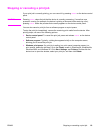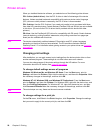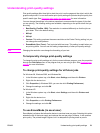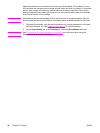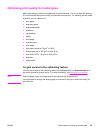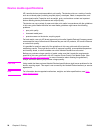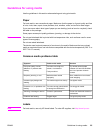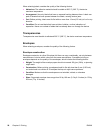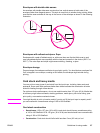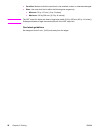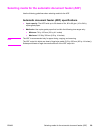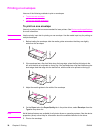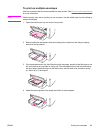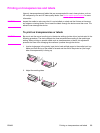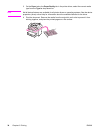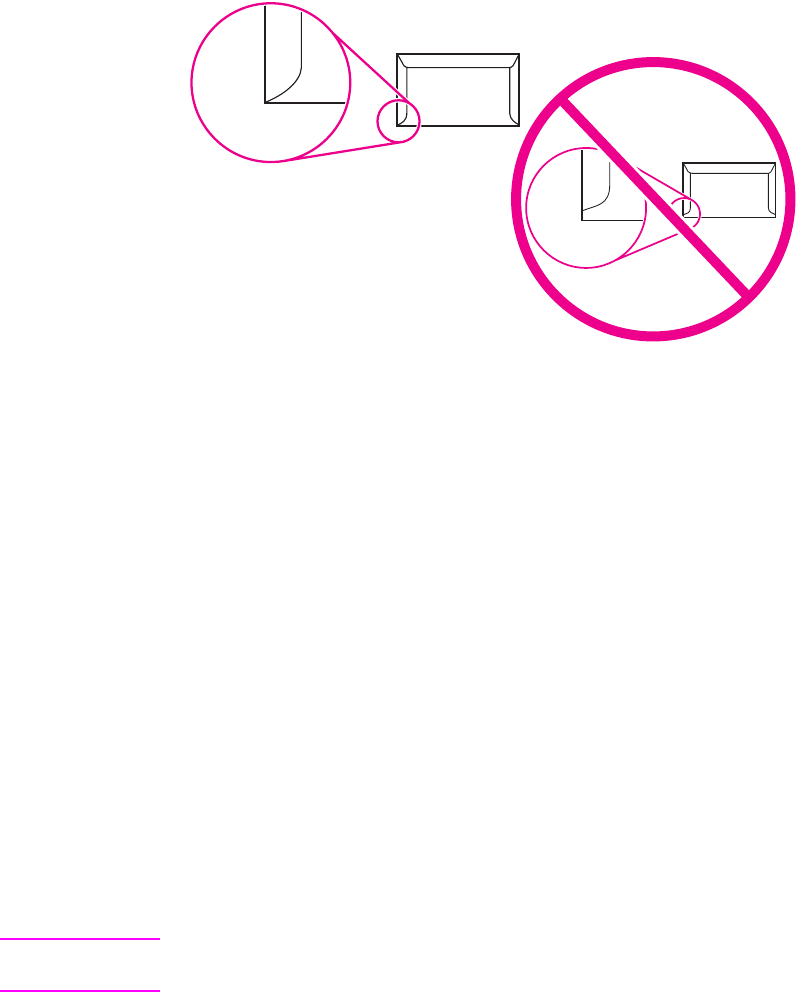
Envelopes with double-side seams
An envelope with double-side-seam construction has vertical seams at both ends of the
envelope rather than diagonal seams. This style is more likely to wrinkle during printing. Make
sure that the seam extends all the way to the corner of the envelope as shown in the following
illustration:
Envelopes with adhesive strips or flaps
Envelopes with a peel-off adhesive strip or with more than one flap that folds over to seal
must use adhesives that are compatible with the heat and pressure in the device (200° C or
392° F). The extra flaps and strips might cause wrinkling, creasing, or jams.
Envelope storage
Proper storage of envelopes contributes to good print quality. You should store envelopes flat.
If air is trapped in an envelope, creating an air bubble, the envelope might wrinkle during
printing.
Card stock and heavy media
You can print on many types of card stock from the input trays, including index cards and
postcards. Some card stock performs better than others because the construction is better
suited for feeding through a laser device.
For optimum device performance, do not use media heavier than 157 g/m
2
(42 lb). Media that
is too heavy might cause misfeeds, stacking problems, media jams, poor toner fusing, poor
print quality, or excessive mechanical wear.
Note
You might be able to print on heavier media if you do not fill the input trays to capacity and if
you use media with a smoothness rating of 100 to 180 Sheffield.
Card stock construction
●
Smoothness: 135 to 157 g/m
2
(36 to 42 lb) card stock should have a smoothness rating
of 100 to 180 Sheffield. 60 to 135 g/m
2
(16 to 36 lb) card stock should have a smoothness
rating of 100 to 250 Sheffield.
● Construction: Card stock should lie flat with less than 5 mm (0.2 inch) of curl.
ENWW Guidelines for using media 27



